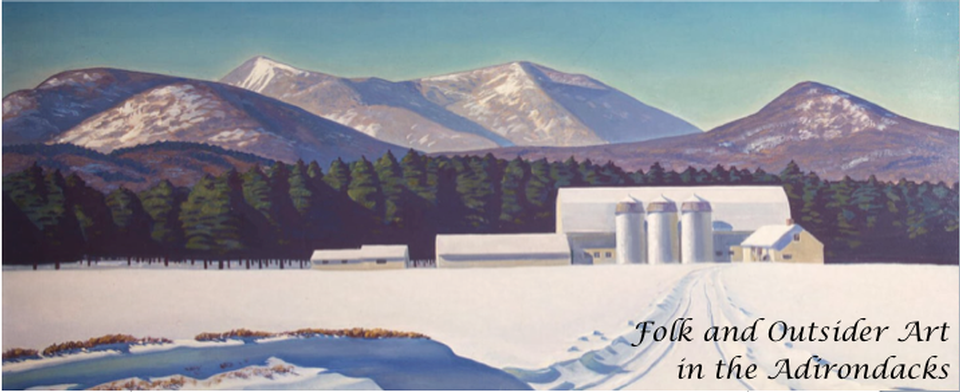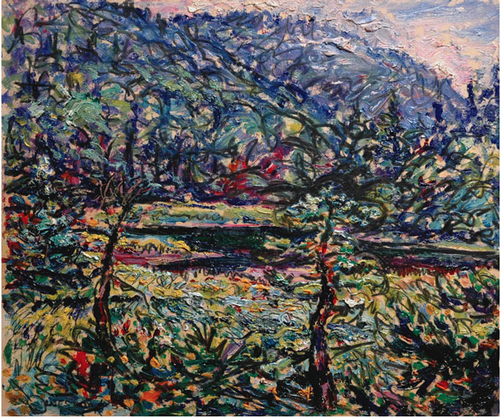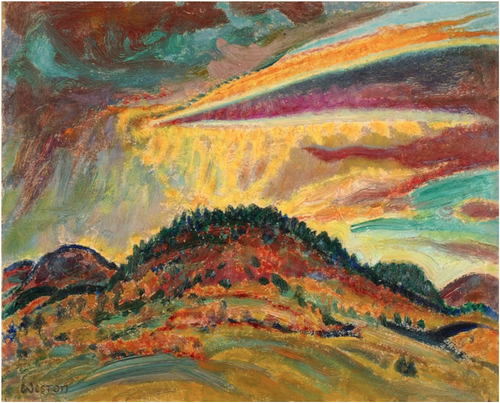Harold Weston: Painting Emotions
Harold Weston was born in February 1894 in Pennsylvania (Foster 10). He and his family briefly lived in Europe when he was 15, and he was very influenced by “modern” European art that “spoke to emotions and an inner self, not merely an objective technique” (Foster 10). Throughout his life, Weston spent most of his summers in the Adirondacks, as his family had a camp at St. Huberts. It was actually the unlikely event of contracting polio in the Adirondacks when he was 17 that allowed Weston to become an artist (Fowler 11).
In 1920, Weston and a local carpenter built a one-room log cabin near St. Huberts, in the heart of the Adirondack wilderness ("Alone WIth Paint in the Adirondacks"). His goal was to “stay and paint the glory of God in nature” (Fowler 16). With a staff to support his half-paralyzed leg (a product of the polio), Weston hiked the hills and rowed the lakes, “chopped his wood and howled at the moon” (“Alone With Paint in the Adirondacks”). Once he got married in 1923, Weston moved away from Adirondack landscapes to paint nudes of his wife. Then, in 1926 the Westons moved to France for 4 years—ending the main period of Weston’s Adirondack painting (Foster 121).
Weston definitely had a strong connection to the Adirondacks. When he was painting in the Adirondacks, “Weston made it clear that the paintings were not done outside. He wanted to paint what he felt rather than what he saw” (Phillips 62). However, even with this deep emotional connection to the Adirondacks, Weston was an outsider. His style was inspired by Persian and Mesopotamian (Iran and Iraq) landscapes that he saw during World War I (Phillips 61). Like folk artists, his paintings reflected his own experience in the Adirondacks, but Weston used painting to reflect his experiences in so many other places too. It could be that he fell into his own specific category: and outsider folk artist. He was not a “local” of the Adirondacks, but his art could be considered folk because it reflected his own feelings and experiences in such a raw and untrained way.
Harold Weston also carved the frames for his paintings (as seen above). This re-affirms his position as an outsider folk artist, because in many ways he was self-made and he even used surrounding materials in his work. However, he was sill an outsider looking in at the Adirondacks and focusing on landscapes and picturesque scenes.
As Caroline Walsh writes in her essay, "The Rich Reward of Wilderness," Harold Weston's Adirondack art manifests "the latent every of ancient rock, rushing waters, and mighty winds; the vivid palettes of sunrise and sunset; nature's ordinary and sublime" (108). Weston had a true passion for the Adirondacks, clearly visible throughout his work.



